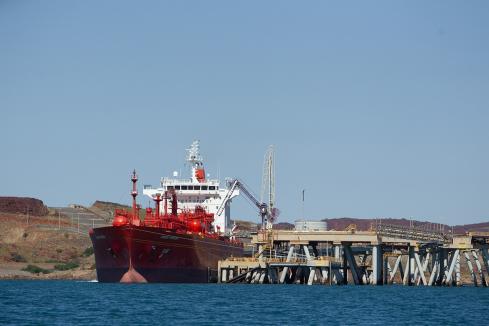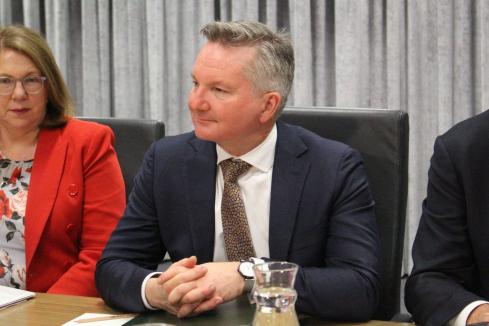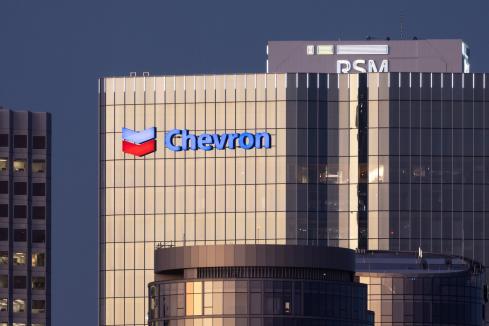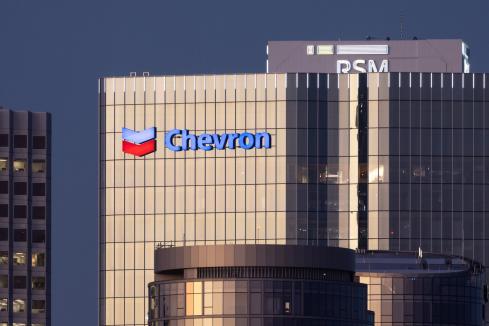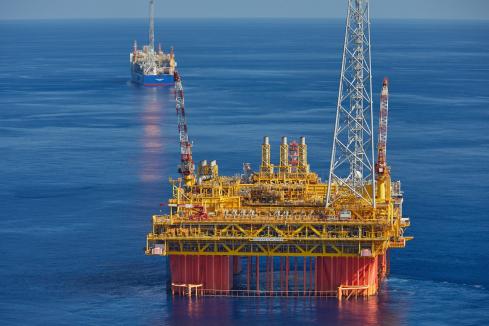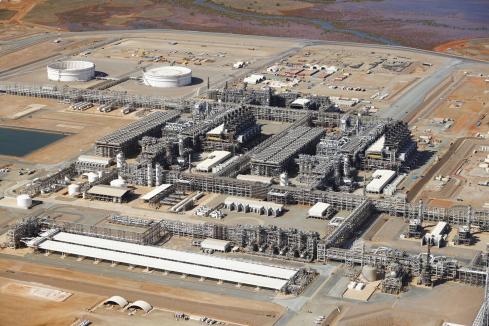Mark Hatfield spent his youth cleaning tables in his father’s hamburger restaurant in Oklahoma, a world away from the Chevron Australia operation he now leads as managing director.

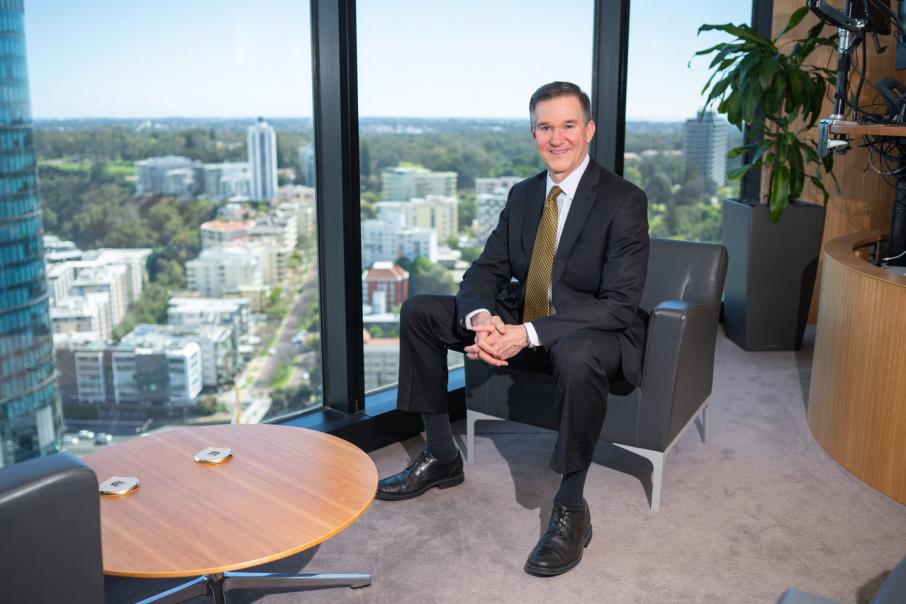
Leading one of the state’s most capital-intensive businesses, Chevron Australia boss Mark Hatfield says his focus is on people.
Mark Hatfield spent his youth cleaning tables in his father’s hamburger restaurant in Oklahoma, a world away from the Chevron Australia operation he now leads as managing director.
With a brother and a sister, Mr Hatfield recalls a family-oriented, stable childhood he describes as “blessed”.
“You could easily say [I] grew up with modest means, we didn’t know that.
I don’t even know if my parents did, quite honestly,” Mr Hatfield told Business News.
“But we were happy, healthy, it was quite nice.”
Soon enough, he found himself working at Hatfield’s Hamburgers, a drive-in restaurant with American staples like milkshakes.
Mr Hatfield said he learned some valuable lessons from those early days.
“When I was old enough to wipe down a table, I started doing that part as my role,” he said.
“My parents both worked pretty hard; they instilled a work ethic in my brother, sister, and me.
“An honest day’s work will give you an honest day’s wages.”
Mr Hatfield said he was the first in his family to undertake tertiary studies, at the University of Tulsa, also in Oklahoma.
He studied a bachelor’s degree in petroleum engineering, and a master’s in civil engineering.
“I had a couple of courses in geology in my high school,” he said.
“I just thought geology was fascinating.
“But my aptitude test kept saying I needed to be an engineer.”
Petroleum engineering combined both engineering and geology.
It also gave him an opportunity to be outdoors, which he still loves to this day as a frequent hiker around Perth.
Chevron recruited Mr Hatfield straight out of university, which eventually led him to Western Australia in March this year as he started as managing director for the Australian business.
Previous roles include that of vice-president of exploration and production for Chevron’s Gulf of Mexico arm, and as general manager of strategy and planning for Chevron’s North American upstream business.
“We had a fairly large exploration budget,” Mr Hatfield said of his time in the Gulf of Mexico operations.
“We really had the whole value chain.
“New leasing, new exploration, new projects, new developments, new operations; it was through the lifecycle of the business.”
Highlights included sanctioning the $US5.7 billion Anchor oil field, first oil from the Big Foot field, and a major discovery at the Ballymore prospect.
There were parallels with Chevron’s Australian portfolio, with assets in deep water, dealing with high temperatures and pressures, and remote operations.
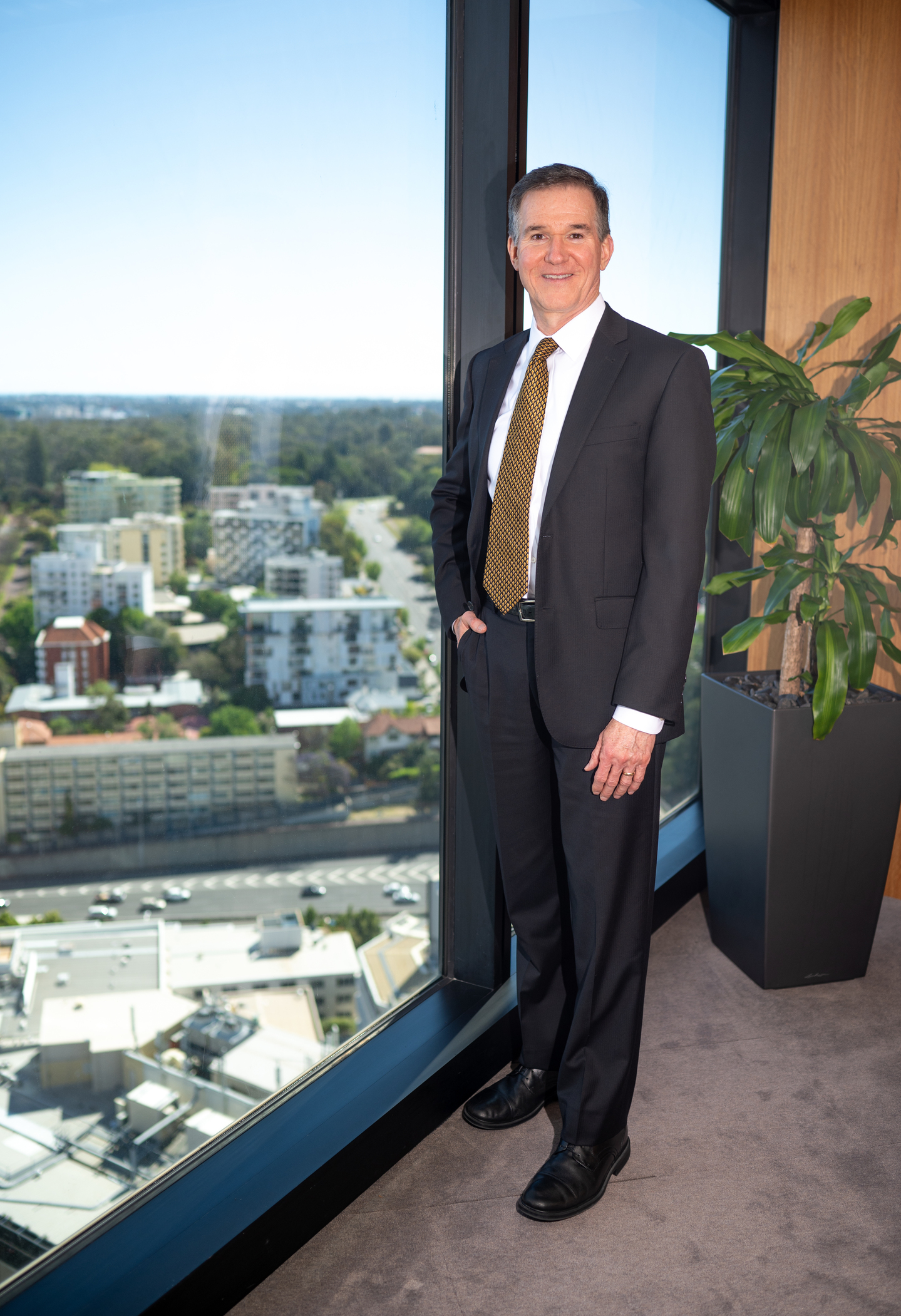
Next year will be Mr Hatfield’s 40th year with the company.
“It’s most definitely a values alignment,” Mr Hatfield said when asked what led him to work for four decades with the business.
“Chevron thrives on trying to create a culture that people want to work for.
“I could talk about workplace culture all day long.
“They give people a lot of responsibility early in their careers, they keep growing that.
“Meaningful work, work that you feel like you can make a difference with.
“You meet people at Chevron and say that’s a pretty good mate right there.
“We’re very intentional on who we hire and who we bring.” People focus Chevron and its partners invested close to $100 billion in its two mega projects in WA, Gorgon and Wheatstone which liquefy natural gas to ship into Asia.
It’s an amount equivalent to almost 10 per cent of the state’s capital stock.
That means the US-based supermajor is one of the most substantial investors in WA.
But Mr Hatfield’s recurring theme when speaking to Business News is about people.
“If you want the business to do well, you have to have a very competent, motivated workforce,” he said.
“Having the right people with the right skill at the right place at the right time matters.”
Profitability and community licence hinged on having an environment in which people wanted to work for the company.
Mr Hatfield said a successful business would need a culture where people felt they could make a difference and that they mattered.
In terms of the outcomes he hoped to achieve while in Australia, Mr Hatfield again pivoted to the theme of workplace culture.
“We have a great culture here; I’d like to even make it better,” he said.
“I’ve got a belief if you have a happy employee, all those other things will just work.”
Working on the business’s culture was important to attract staff in what is a tight job market.
“When I put together a compensation package, part of that is direct pay, part of that is whether the employee enjoys coming to work,” Mr Hatfield said.
The best example was the company’s embrace of flexible work practices.
“We call it a hybrid work schedule; we know there’s value in coming together face to face to help in that collaboration and building special relationships,” Mr Hatfield said.
“But we also know that people appreciate flexibility, and they might just be in the personal stage in their life with family needs, or long commutes.”
Other cultural programs include a move driven by employees to work with the Zero2Hero youth leadership mental health program.
Chevron also takes families of employees up to site to understand their work, and has introduced initiatives to empower workers to make decisions instead of management.
“That’s been a breath of fresh air for a lot of our workforce, knowing they’re trusted, they’re empowered,” Mr Hatfield said.
On recent reporting of sexual harassment in the resources sector, Mr Hatfield said Chevron was participating in the parliamentary inquiry and was training its workforce to intervene if they saw inappropriate behaviour, through the Upstander program.
The inquiry heard in late November that there had been 22 allegations of harassment over five years on Chevron’s sites, including contractors and employees.
Of those claims, 12 were substantiated and seven people sacked.
Challenge
Mr Hatfield said the hardest point in his career was a fatality on an offshore platform in his area of responsibility about five years ago.
A young man fell to their death.
“I felt awful, just like our entire workforce did,” he said.
“We want everybody to go home every day, every night from the workplace.
“One individual was not able to do that.
“While I didn’t know [them] personally, I could just envision that person had family, they had aspirations.
“It just went away.”
Mr Hatfield said the company had processes and safeguards in place, but it had not anticipated this incident.
Investment pipeline
The Gorgon and Wheatstone developments are multi-decade investments with significant economic impact.
A report by consultants ACIL Allen estimates Gorgon will contribute $687 billion to Australian GDP cumulatively between 2016 and 2050.
Both operations will need continuing supplies of new gas to keep producing at full capacity through their full life cycle.
Chevron has previously said it has almost 50 trillion cubic feet of gas resources in WA.
Australia is home to a quarter of the company’s “reserves which had remained undeveloped for more than five years,” according to its recent annual report.
Developments already well under way include Gorgon Stage 2, which was a $US5.1 billion investment decision in 2018 to drill new wells and build subsea infrastructure.
The next project to keep gas flowing into Gorgon was sanctioned in July – Chevron’s Jansz-Io Compression project, which will require a $US4 billion ($A6 billion) capital investment.
The Jansz-Io field has been in production since 2015, and pressures in the gas reservoir will start to decline by 2025.
The compression project is intended to help extract more of that gas.
It’s the first time the subsea compression technology has been used in WA, and it will follow Equinor’s Asgard project in the North Sea, which started operation in 2015.
“This one will be in deeper water and on a larger scale, what I’ll call it is an extension of existing technology,” Mr Hatfield said.
“But still, it’ll be a big milestone, it’ll be the largest of its type in the world… you don’t want to go into that without being pretty thoughtful.”
Mr Hatfield said there would be an ongoing series of projects to keep gas supplied and supporting WA jobs.
“The money will be spent predominantly here,” he said.
“It’s largely local content.
“A lot of local jobs.
“If you look at our plans over the next couple of decades, we’ve just got project after project after project with large investment plans, which basically translates into good-paying jobs inside Chevron, outside Chevron, and investment in WA.”
Beyond Gorgon Stage 2 and Jansz-Io Compression projects, Chevron does not offer much commentary publicly.
But Business News can provide some guidance drawn from a 2019 engineering briefing, when Chevron listed an upcoming development at the Chrysaor and Dionysus fields in the northern Carnarvon basin, with up to six wells to be ready for start-up by 2027.
That would be followed by a further six wells at Geryon and Eurytion to be ready for start-up by 2031 or potentially earlier.
A series of projects will be needed in intervals of between five to eight years out to 2048, including a compression project at Gorgon, the engineering briefing said.
Names on that list include the West Tryal Rocks field, Orthus, Semele and Chandon.
Off the platforms and closer to Perth, Chevron is planning to move into a new office in Elizabeth Quay in early 2023.
Mr Hatfield said that was another example of the company’s long-term commitment to WA.
“When I think of WA, the resources here, natural resources and human resources are outstanding,” Mr Hatfield said.
“WA is blessed with strong natural gas resources.
“A lot of it has been discovered, some [still] to be discovered, and [it’s] fulfilling a need for fuelling.
“We’ve also got one of the brightest, hardest-working workforces around.
“It’s a great community to do business in.”
Emissions
Chevron has battled two major social licence issues in recent years, with delays in the start-up of carbon capture at Gorgon and safety issues at its LNG trains.
Gorgon’s carbon capture was a $1billion-plus project which was one of the world’s first and biggest projects of its kind.
It was to take greenhouse emissions from LNG processing and store them underground.
CCS is one technology that will help reduce carbon emissions, particularly if the world overshoots the net-zero-by-2050 goal, according to the International Panel on Climate Change.
The Gorgon system started operation in April 2019, following Gorgon’s third LNG train coming online in early 2017.
The delays meant Chevron was unable to capture and store 80 per cent of its emissions over that period as it had promised.
That led to strong criticism from environmentalists.
The Conversation Council of Western Australia said in January that carbon capture had been curtailed months after it started because of problems with wells.
They had estimated 7 million tonnes of carbon had been emitted rather than captured over the facility’s life.
In late November, Chevron committed to buy 5.2 million tonnes of carbon offsets to make up for carbon it was unable to sequester, and also promised $40 million of investments into the state.
About 5.5mt has so far been sequestered at Gorgon.
Mr Hatfield said energy demand would continue to grow globally as countries developed, but Chevron acknowledged it needed to reduce its carbon footprint.
That would include reducing emissions in operations, buying offsets, new energy sources, and working on negative emission technology such as carbon capture and storage.
“It’s going to be difficult, with today’s technology and what we see even going forward, we’re not as confident you can go completely with wind and solar to supply the energy the world needs,” Mr Hatfield said.
“If we can come up with some effective, real negative emission technology to offset emissions that are maybe going to be inevitable, [we] can reach the future that we all want, net zero by 2050.”
He said the company had learned from the carbon capture project and was sharing the information with other groups.
“Any new project, any new development... pioneering endeavour, you’re going to learn some things,” Mr Hatfield said.
“It’s exciting, actually, even our partners on that venture are taking the lessons to apply not just here in Australia but around the globe.”
Cracks at propane kettles at Gorgon had also been fixed, a process that wrapped up in July, he said.
The cracks led to processing trains being shut down, with the welds now repaired.
“Our team did a phenomenal job; that wasn’t easy work,” Mr Hatfield said.










